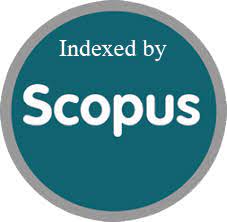A PULMONARY LOBE BASED COVID DISEASE PREDICTION USING DEEP LEARNING TECHNIQUES
DOI:
https://doi.org/10.63682/jns.v14i14S.3426Keywords:
COVID prediction, pulmonary lobe, image processing, Convolutional neural network, deep learningAbstract
Corona virus disease 2019 (COVID-19) is an infectious disease triggered by severe acute respiratory syndrome corona virus 2 (SARS-CoV-2). Since the disease has spread all over the globe in enormous numbers and is declared a pandemic. Although radiological imaging is not recommended for diagnostics as the patient arrives in the clinic, a chest X-ray is often useful to monitor treatment outcomes and co morbidities in seriously ill patients. The detection of COVID-19 from chest X-ray and its differentiation from lung diseases with identical opacities is a puzzling task that relies on the availability of expert radiologists. Recently, several researchers have reported the use of AI-based tools in solving image classification problems in healthcare, based on training with X-ray images, CT scans, and histopathology images. Deep learning is an extremely powerful tool for learning complex, cognitive problems, and the frequency of their use and evaluation in different problems is increasing. In the present study, we have made use of a deep learning algorithm using the convolutional neural network (CNN) that can efficiently detect COVID-19 from CT-scan images. And also implement Multi-class CNN to identify the multiple lung diseases such as Pneumonia, tuberculosis. Experimental results shows that the proposed system provide improved accuracy in disease prediction and also provide the diagnosis information about analysed diseases
Downloads
Metrics
References
N. Chen, M. Zhou, X. Dong, J. Qu, F. Gong, Y. Han, Y. Qiu, J. Wang, Y. Liu, Y. Wei, J. Xia, T. Yu, X. Zhang, and L. Zhang, (2020) ‘Epidemiological and clinical characteristics of 99 cases of 2019 novel coronavirus pneumonia in wuhan, china: a descriptive study’ Lancet (London, England), vol. 395, pp. 507–513.
Fauci, H. C. Lane, and R. R. Redfield (2020)‘Covid-19 - navigating the uncharted’ The New England journal of medicine, vol. 382, pp. 1268–1269.
W.-J. Guan, Z.-Y. Ni, Y. Hu(2020), ‘Clinical characteristics of coronavirus disease 2019 in china.’ The New England journal of medicine, vol. 382, pp. 1708–1720.
Irvin, Jeremy, et al(2019). ‘Chexpert: A large chest radiograph dataset with uncertainty labels and expert comparison.’ Proceedings of the AAAI Conference on Artificial Intelligence. Vol. 33. No. 01.
Johnson, Alistair EW, et al(2019).‘MIMIC-CXR-JPG, a large publicly available database of labeled chest radiographs.’ arXiv preprint arXiv:1901.07042.
Mei, Xueyan, et al(2020). ‘Artificial intelligence–enabled rapid diagnosis of patients with COVID-19.’ Nature medicine 26.8: 1224-1228.
H. Shi, X. Han, N. Jiang, Y. Cao, O. Alwalid, J. Gu, Y. Fan, and C. Zheng(2020), ’Radiological findings from 81 patients with covid19 pneumonia in wuhan, china: a descriptive study.’ The Lancet. Infectious diseases, vol. 20, pp. 425–434.
Shi, Feng, et al(2020). ‘Review of artificial intelligence techniques in imaging data acquisition, segmentation and diagnosis for covid-19.’ IEEE reviews in biomedical engineering.
D. Wang, B. Hu, C. Hu, F. Zhu(2020), ‘Clinical characteristics of 138 hospitalized patients with 2019 novel coronavirus-infected pneumonia in wuhan, china.’ JAMA.
Xie, Xingzhi, et al(2020). ‘Chest CT for typical coronavirus disease 2019 (COVID-19) pneumonia: relationship to negative RT-PCR testing.’ Radiology 296.2: E41-E45.
Vithya Ganesan, B. Rahul, V. AnjanaDevi, SrianimaPadmini Viriyala, Ramya Govindaraj, Subrata Chowdhury, Jerry Chun-Wei Lin, “Block-chain based Smart Supply Chain and Transportation for Agri 4.0”, pages 135-156, Science Direct, April 2024.
Viswanathan Ramaswamy. Saikat Maity, N. Mohana Priya, Vithya Ganesan, Sri Anima Padmini, Subrata Chowdhury, Saurabh Adhikari, “Studies on Potential Conflicts of Network Densification in 6G”, pp 231-241, Proceedings of Second International Conference on Intelligent System, Springer Link, April 2024
Kennedy C Onyelowe, J Jagan, Denise-Penelope N Kontoni, Arif Ali Baig Moghal, Ifeanyichukwu C Onuoha, R Viswanathan, Deepak Kumar Soni, Utilization of GEP and ANN for predicting the net-zero compressive strength of fly ash concrete toward carbon neutrality infrastructure regime, International Journal of Low-Carbon Technologies, Volume 18, 2023, Pages 902–914,
Vithya Ganesan, k Vijaya Kumar, V Anjana Devi, P Ramadoss, “Hybrid Intelligence for Multimedia Data in Intra IoT (IIoT) Cloud by Persistent homology”, DOI: 10.1109/ACCAI53970.2022.9752558, International conference on Advances in computing, Communication and Applied Informatics (ACCAI), January 2022.
Downloads
Published
How to Cite
Issue
Section
License

This work is licensed under a Creative Commons Attribution 4.0 International License.
You are free to:
- Share — copy and redistribute the material in any medium or format
- Adapt — remix, transform, and build upon the material for any purpose, even commercially.
Terms:
- Attribution — You must give appropriate credit, provide a link to the license, and indicate if changes were made. You may do so in any reasonable manner, but not in any way that suggests the licensor endorses you or your use.
- No additional restrictions — You may not apply legal terms or technological measures that legally restrict others from doing anything the license permits.










